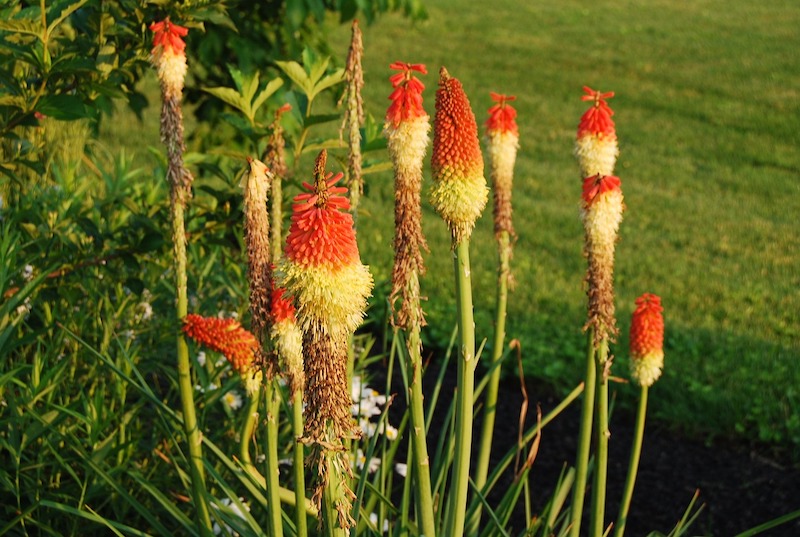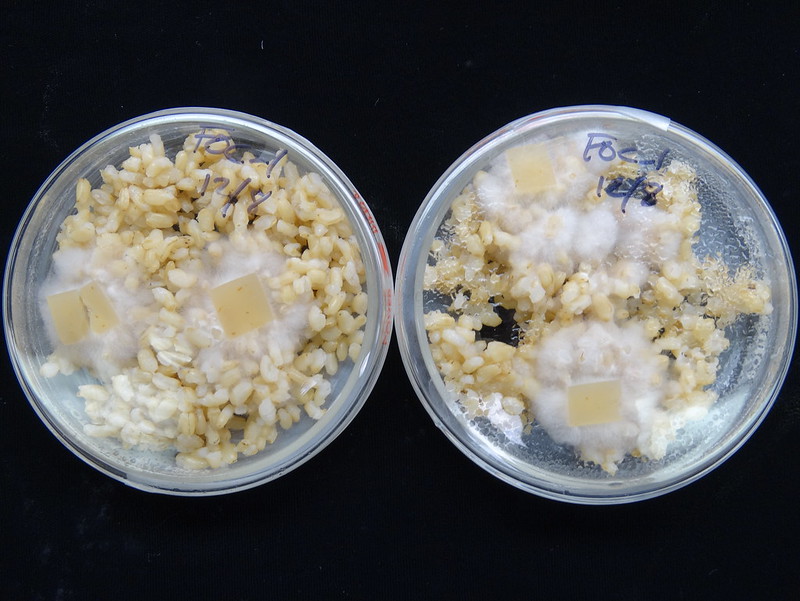Red Hot Poker is an easy-to-grow herbaceous perennial and typically resistant to most plant diseases. The only time that Red Hot Poker is liable to fail is when the growing conditions are unsuitable. Red Hot Poker requires well-drained soil and may develop crown or root rot in soggy conditions, particularly during cold winter weather. The main pathogens that cause rot live in soil with poor drainage and can remain at the infected planting site for many years. These diseases can move slowly or quickly depending on the conditions of the plant and planting site.

Fusarium Root Rot
Root rot pathogens can only be positively identified by using a microscope, although the symptoms are typically similar between different types of fungal infection. Fusarium infections often present as wilted foliage that resembles under-watering symptoms. The growth of new flowers may be stunted, and the overall vigor of the plant will decline.
Identifying Fusarium Root Rot
The roots of an affected plant will have a dark coloring and may even disintegrate. The deteriorated root system will not be able to support large amounts of top growth, leading to the demise of the plant.

Photo by Scot Nelson
Treating Fusarium Root Rot
There are no fungicides that control fusarium infections and other related root rot diseases. The best treatment is to grow Red Hot Poker in the conditions it prefers. Plant it in full sun and in well-draining soil that is moderately fertile. Overwatering or poor drainage will stress this perennial and increase its susceptibility to fungal pathogens. Fusarium root rot typically leads to the death of the plant. Discard affected plants in the trash. Do not replant the area with Red Hot Pokers, as fusarium is host specific and may take 3-5 years to die out in infected soil.
Phytophthora Crown Rot
Phytophthora species are another group of pathogens that cause root rot. The main symptoms include a sudden decline in the top growth and brown or dark-colored streaking of the stems near the base of the plant. Cut stems will show dark marks where the vascular system of the plant is infected with phytophthora. The disease often spreads throughout the plant and eventually causes its demise.
Identifying Phytophthora Crown Rot
A decline in a portion or all of the top stem growth is a sign of phytophthora crown rot. Dark marks will start at the base of the plant and eventually take over whole stems. Lesions on the roots may be seen if the rootball is dug up and inspected. The dark marks are easiest to see in taprooted plants.
Treating Phytophthora Crown Rot
Phytophthora crown rot is rarely curable. Infected plant material should be completely removed and discarded. Contaminated soil should be solarized before replanting. To do this, cover the affected area with either black or clear plastic for 4-6 weeks to heat up and dry out the soil, which makes it inhospitable for the phytophthora mold. Select plants known to be resistant to phytophthora and only plant in well-drained locations.
Since phytophthora rot is difficult if not impossible to treat, the best approach is to prevent infection in the first place. Poorly draining soil is the perfect breeding ground for phytophthora. Ensure the soil drains well year-round to keep plants healthy and able to resist infection. Avoid overwatering plants to keep the soil on the drier side.
Red Hot Poker Disease Chart
| Disease | Identifying | Treating |
|---|---|---|
| Fusarium Root Rot | Wilting of top growth even though the plant is well watered; sudden death with no visible evidence above ground | Remove infected plants; do not plant the same plant species in the infected area |
| Phytophthora Crown Rot | Overall decline in plant growth; brown or dark streaking from the crown of the plant upward | Correct poor drainage, and move plant to an area with better year-round drainage |
Sources: "Kniphofia." North Carolina Extension Gardener Plant Toolbox. plants.ces.ncsu.edu
 |
Author Robbin Small - Published 11-15-2023 |
